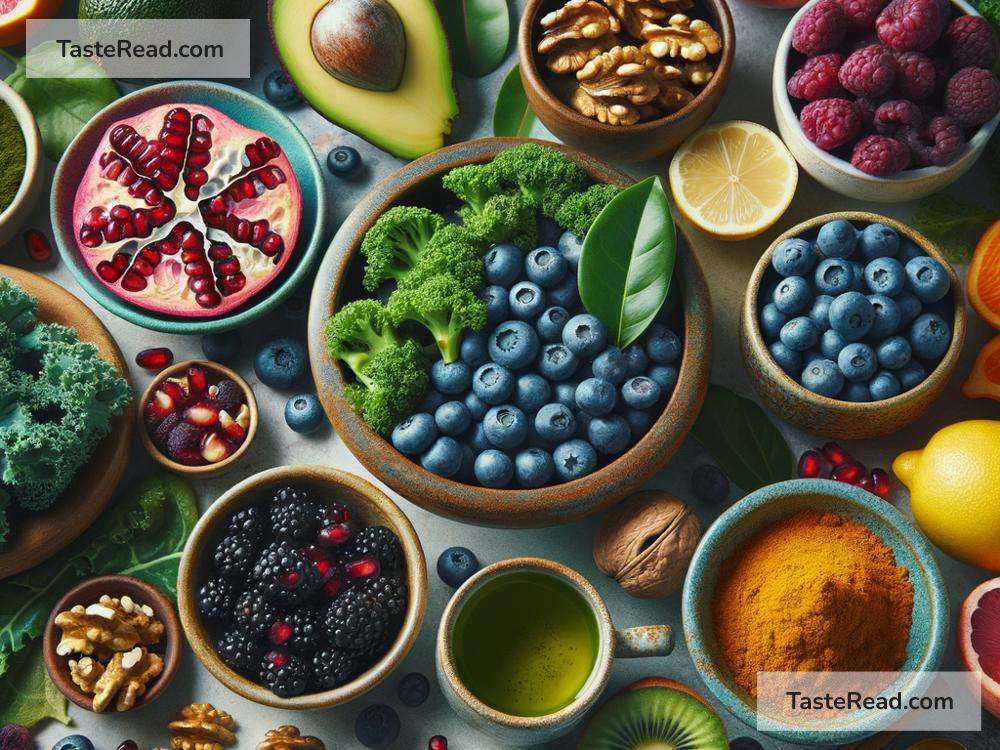Foods That Reduce Oxidative Stress: Simple Lifestyle Changes for Better Health
Every day, as we breathe, eat, and go about our lives, our bodies produce something called free radicals. These are unstable molecules that can cause damage to our cells, leading to a condition known as oxidative stress. Oxidative stress plays a role in aging and can increase the risk of chronic diseases like heart disease, diabetes, and cancer. Thankfully, there’s good news: eating the right foods can help reduce oxidative stress and keep you healthy.
In this blog, we’ll explore what oxidative stress is, how certain foods can fight it, and some practical tips on adding these foods to your diet.
What Is Oxidative Stress?
Oxidative stress happens when there’s an imbalance between free radicals and antioxidants in your body. Free radicals are produced naturally during processes like digestion or exercise, but exposure to pollution, cigarette smoke, or unhealthy food can also increase their levels.
Antioxidants, on the other hand, are compounds that help neutralize free radicals, preventing them from causing damage. By eating foods rich in antioxidants, you can give your body the tools it needs to fight oxidative stress and stay healthy.
Top Foods That Reduce Oxidative Stress
Here are some of the best foods to include in your diet to combat oxidative stress:
1. Berries
Berries, like blueberries, strawberries, raspberries, and blackberries, are packed with antioxidants called flavonoids. These compounds help protect your cells from damage. Blueberries, in particular, are rich in anthocyanins, which are powerful antioxidants linked to improved brain health and reduced inflammation.
How to Eat Them: Add berries to your morning oatmeal, blend them into smoothies, or enjoy them as a snack with yogurt.
2. Leafy Greens
Spinach, kale, and Swiss chard are loaded with vitamins like vitamin C and E, as well as other antioxidants that can help fight oxidative stress. These greens also contain magnesium and fiber, which are great for overall health and can lower inflammation.
How to Eat Them: Include a handful of spinach in your salads, sauté kale as a side dish, or blend leafy greens into your smoothies.
3. Nuts and Seeds
Walnuts, almonds, sunflower seeds, and chia seeds are rich in antioxidants and healthy fats. They contain vitamin E, which is known for its ability to protect cells from oxidative damage.
How to Eat Them: Sprinkle nuts and seeds on top of your yogurt or oatmeal, use almond butter as a spread, or snack on a handful of nuts during the day.
4. Fatty Fish
Salmon, mackerel, and tuna are excellent sources of omega-3 fatty acids. These healthy fats help reduce inflammation, which can amplify oxidative stress levels if not controlled. Fatty fish also contains selenium, an antioxidant that supports cell repair.
How to Eat Them: Grill or bake salmon for dinner, add tuna to your salads, or enjoy sardines on crackers as a quick snack.
5. Dark Chocolate
Chocolate lovers, rejoice! Dark chocolate (with at least 70% cocoa) is rich in antioxidants like polyphenols, which help combat free radicals. It also gives you a small energy boost and can improve blood circulation.
How to Eat Them: Enjoy a small square of dark chocolate as a treat, or add cocoa powder to smoothies and baked snacks for a health boost.
6. Green Tea
Green tea is one of nature’s most potent sources of antioxidants, particularly catechins. It helps your body fight free radicals while reducing inflammation and supporting brain health. Drinking green tea regularly can improve your energy levels and support longevity.
How to Eat Them: Brew a cup of green tea with lemon for an antioxidant-rich beverage, or use matcha powder in smoothies or desserts for extra benefits.
7. Citrus Fruits
Oranges, lemons, grapefruits, and limes are high in vitamin C, an essential antioxidant for minimizing oxidative stress. Vitamin C also boosts your immune system and helps reduce inflammation in the body.
How to Eat Them: Snack on an orange, squeeze lemon juice over your salad, or drink fresh grapefruit juice for an antioxidant kick.
8. Turmeric
Turmeric, a bright yellow spice commonly used in curry, contains curcumin—an antioxidant and anti-inflammatory compound. Curcumin helps protect cells from oxidative damage and can support joint health and digestion.
How to Eat Them: Add turmeric to soups, stews, or rice dishes. You can also make “golden milk” by mixing turmeric into warm milk with a touch of honey.
9. Tomatoes
Tomatoes are rich in lycopene, an antioxidant that not only fights free radicals but also improves skin health and lowers the risk of certain cancers. Cooked tomatoes have even more lycopene than raw ones, so feel free to enjoy tomato-based sauces!
How to Eat Them: Slice tomatoes into salads, make a homemade pasta sauce, or blend them into soups.
Tips for Incorporating These Foods Into Your Diet
Here are some simple ways to add these antioxidant-rich foods to your meals:
- Plan meals that include a variety of colorful fruits and vegetables. The brighter your plate, the more antioxidants you’re likely to get.
- Snack on nuts and seeds instead of chips or sugary snacks.
- Cook with olive oil, another antioxidant-rich food that’s great for your heart and overall health.
- Make smoothies using a combination of berries, leafy greens, and citrus fruits for a quick and easy antioxidant boost.
Final Thoughts
Oxidative stress may sound complicated, but managing it doesn’t have to be. By eating antioxidant-rich foods like berries, leafy greens, nuts, fatty fish, and drinking green tea, you can help your body fight free radicals and stay healthier longer. Just a few small changes in your diet can make a big difference over time.
So go ahead—prepare a colorful plate, sip on some green tea, and enjoy the health benefits of a diet designed to reduce oxidative stress. Your body will thank you!


